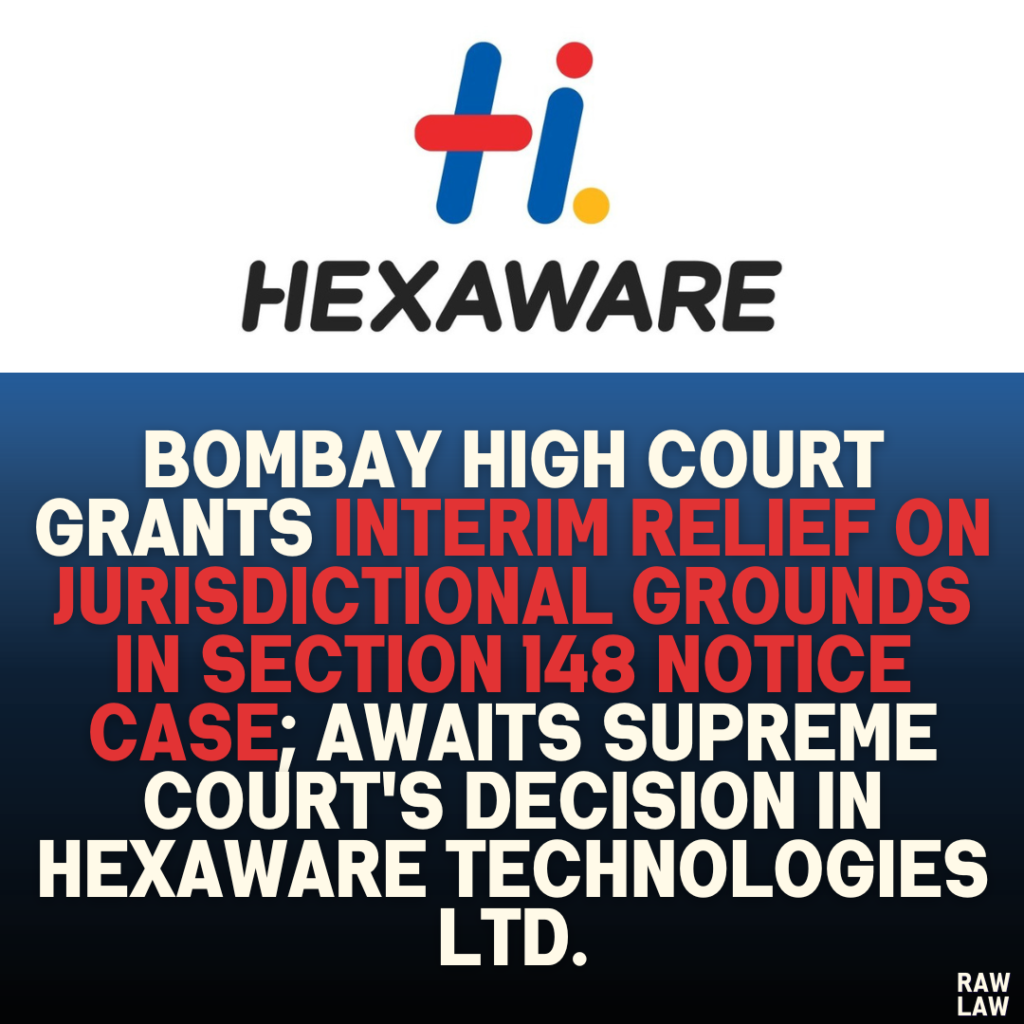Court’s Decision:
The Bombay High Court, hearing arguments on the jurisdictional authority of the Income Tax Department, granted interim relief to the petitioner. The court restrained further actions based on a disputed notice issued under Section 148 of the Income Tax Act, related to Assessment Year 2018-19. The court allowed this interim relief pending a final determination in the Supreme Court concerning the precedent set by Hexaware Technologies Limited v. Assistant Commissioner of Income Tax & Others.
Facts:
The petitioner challenged a notice dated July 27, 2022, issued by the Jurisdictional Assessing Officer under Section 148 of the Income Tax Act, alleging it was beyond the officer’s authority. The petitioner argued that the notice contradicted the principles established in Hexaware Technologies Ltd., where the court previously outlined limitations on jurisdiction under similar circumstances.
Issues:
The primary issue was whether the Jurisdictional Assessing Officer had the authority to issue a notice under Section 148 of the Income Tax Act, given the jurisdictional concerns raised in Hexaware Technologies Ltd.. The secondary issue was whether the court should grant interim relief, pending the Supreme Court’s decision on the applicability of this precedent.
Petitioner’s Arguments:
The petitioner contended that, as per the Bombay High Court’s ruling in Hexaware Technologies Ltd., the Jurisdictional Assessing Officer lacked the authority to issue the impugned notice under Section 148. The petitioner argued that the notice was invalid due to jurisdictional overreach, requesting that the court grant interim relief and restrain any actions based on this notice.
Respondent’s Arguments:
The respondent’s counsel acknowledged the petitioner’s reliance on Hexaware Technologies Ltd. but argued for a different interpretation. Referring to M/s. J.D. Printers Pvt. Ltd. v. Income Tax Officer, the respondent suggested that the court’s interpretation in Hexaware should be applied with caution in this case. The respondent requested the court to defer a final order until the Supreme Court resolves the jurisdictional issue definitively.
Analysis of the Law:
The court examined Section 148 of the Income Tax Act, which pertains to the authority to reassess income and issue notices when certain income appears to have escaped assessment. The court focused on the jurisdictional limitations set by prior rulings, specifically examining whether the notice issued to the petitioner adhered to the standards and limits outlined in Hexaware Technologies Ltd..
Precedent Analysis:
The court relied heavily on the Hexaware Technologies Ltd. ruling, which addressed jurisdictional boundaries under Section 148. Additionally, it considered the M/s. J.D. Printers Pvt. Ltd. judgment, where the court had interpreted Hexaware in a similar context but with slight variations in the applicability of jurisdictional limitations. These precedents provided a framework for understanding the limits of the assessing officer’s authority.
Court’s Reasoning:
The court reasoned that, based on the principles in Hexaware, there is a substantive question concerning the validity of the notice issued by the Jurisdictional Assessing Officer. The court noted that the issue was still pending in the Supreme Court, and therefore, interim relief was warranted to prevent potentially unwarranted proceedings under an arguably invalid notice.
Conclusion:
The court issued an interim order, restraining any further actions based on the disputed notice until the Supreme Court issues a ruling on Hexaware Technologies Ltd.. The court also provided liberty to the parties to revisit the issue following the Supreme Court’s decision.
Implications:
This interim order underscores the significant limitations on jurisdiction under Section 148 and affirms that lower courts should respect precedent pending a higher court’s ruling. The decision indicates a cautious approach by the judiciary in allowing proceedings under contested notices, ensuring compliance with established jurisdictional boundaries. The court’s order effectively pauses further assessments and re-assessments under similar circumstances until higher judicial clarity is provided.



